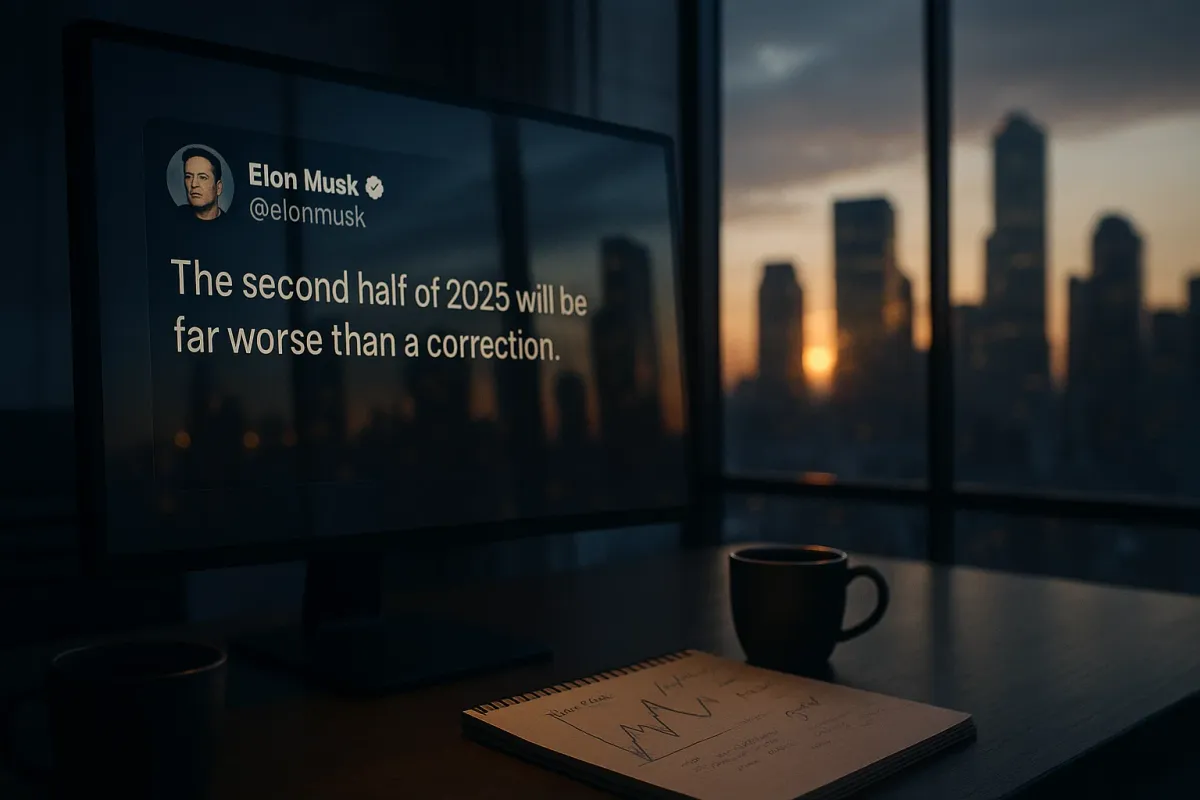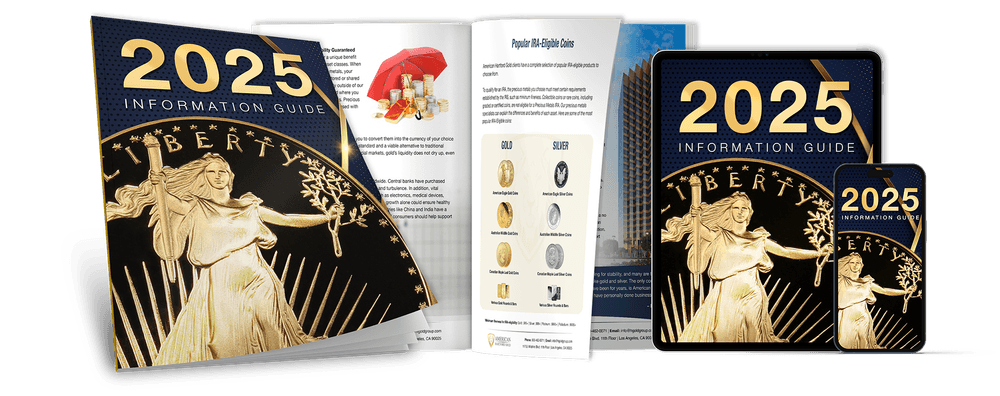The Warning Elon Won't Walk Back

The post appeared at 11:47 AM. No preamble. No context. Just seventeen words that sent financial analysts scrambling.
"Tariffs will cause a recession in the second half of this year."
Elon Musk doesn't usually backtrack. This time, he doubled down.
The Background: When Predictions Become Patterns
Musk has made bold predictions before. Autonomous vehicles. Mars colonization. The collapse of conventional media. Some materialized. Others didn't.
But this warning carried different weight. Not because it was about technology or innovation. Because it was about something more fundamental: the structural integrity of the American economic system.
The context mattered. Ray Dalio, founder of Bridgewater Associates—the world's largest hedge fund—had already warned in April that the United States faced "something worse than a recession." He called it a "breaking down of the monetary order". By September, Musk was echoing concerns about national debt so severe that "if AI and robots don't solve our national debt, we're toast".
These weren't fringe voices. These were billionaires with access to data most Americans would never see, speaking publicly about systemic risks they usually discussed only in private rooms.
The tariff regime implemented in early April 2025 pushed the average effective tariff rate above 15%—the highest since the Great Depression era of the late 1930s. Yale's Budget Lab projected that US real GDP growth would be 0.5 percentage points lower in both 2025 and 2026, with the economy persistently 0.4% smaller in the long run—equivalent to $125 billion annually lost.
By mid-2025, professional forecasters had downgraded their outlook significantly. Real GDP growth predictions dropped from 2.1% to 1.5% for Q2 2025. Unemployment projections rose from 4.2% to 4.5% by Q1 2026. These weren't dramatic collapses. They were the quiet erosion that precedes larger fractures.
Elon Musk has made bold predictions before — and he’s rarely wrong.
This time, his warning isn’t about AI, Mars, or tech monopolies.
It’s about the U.S. economy — and why he believes the second half of 2025 could bring something far worse than a correction.
That’s what Musk posted, publicly calling out what many insiders have whispered for months. The problem isn’t just tariffs.
What follows won’t be gradual — higher prices, global pushback, and a financial chain reaction with real consequences for everyday Americans.
And while the headlines focus on politics, those with something to lose are already moving.
They’re shifting their savings away from politically vulnerable assets — and into strategies designed to withstand economic shocks.
Not stocks.
Not tech.
Not government-backed bonds.
They’re turning to stores of value that don’t depend on Washington, Wall Street, or the Fed.
Fortunately, a special IRS rule — quietly extended under the Trump administration — still allows everyday Americans to reposition part of their retirement savings into these protected channels.
But that window won’t stay open forever. Once the next wave hits, options may tighten fast.
The Data: What Insiders See That Headlines Miss
The numbers told a story that required reading between the lines.
US tariffs implemented in 2025 were projected to raise $2.5 trillion over the 2026-2035 period, but slower economic growth would reduce revenues, bringing net dynamic revenue to $2.0 trillion. The unemployment rate would rise 0.3 percentage points by the end of 2025 and 0.7 percentage points by the end of 2026. Payroll employment would be 490,000 lower by year-end.
Manufacturing would expand by 2.5% in the long run. But construction output would contract by 3.8%, and agriculture would decline by 0.3%. The trade-off was clear: protectionism benefited one sector while crowding out others.
The tariff impact analysis from the Richmond Federal Reserve showed that regions deeply integrated into North American manufacturing supply chains—Michigan, Ohio, Indiana, the Midwest and Southeast—would bear the heaviest burden. Over 30% of firms now ranked trade and tariff policies as their most pressing business concern, more than triple the share from the previous quarter.
But the deeper pattern emerged in what institutions were doing, not saying.
The Trump administration had extended access to alternative assets for 401(k) investors through executive order in August 2025. The Department of Labor rescinded Biden-era guidance that had restricted certain alternative investments, explicitly opening access to assets "previously accessible only to certain pension plans and the very wealthy". This wasn't promotional material. This was regulatory policy.
Simultaneously, the administration signed an $8.5 billion critical minerals framework with Australia, committing over $3 billion in government investments to boost rare earth production. On July 4, 2025, President Trump signed the One Big Beautiful Bill Act, which eliminated the Section 30D Clean Vehicle Credit while maintaining support for domestic critical minerals production.
The pattern was unmistakable: expansion of alternative asset access for everyday Americans while simultaneously eliminating demand-side incentives that had driven traditional EV-related investments.
Gold responded. It surged 40% over the twelve months preceding October 2025. Central banks accumulated 1,037 tonnes in 2024—the second-highest annual total on record. These weren't speculative trades. These were strategic repositioning moves by institutions that understood what tariff wars, debt acceleration, and monetary order disruption actually meant.
The Shift: When Access Becomes Strategic
The regulatory changes happened quietly. No fanfare. No press conferences celebrating expanded retirement account flexibility.
On August 7, 2025, President Trump signed an executive order titled "Democratizing Access to Alternative Assets for 401(k) Investors". Five days later, the Department of Labor rescinded its December 21, 2021 Supplemental Private Equity Statement.
Secretary Lori Chavez-DeRemer's statement was precise: "The federal government should not be making retirement investment decisions for hardworking Americans, including decisions regarding alternative assets".
The IRS rules for precious metals IRAs had existed for decades under Section 408(m). Gold required 99.5% minimum purity. Silver required 99.9%. Platinum and palladium required 99.95%. Storage occurred in IRS-approved depositories, not personal possession.
But access had been functionally limited. Not through explicit prohibition, but through guidance that discouraged plan administrators from offering alternative asset options. The August 2025 executive order removed those barriers.
The timing aligned perfectly with economic projections showing tariff-induced slowdowns, rising unemployment, and agricultural sector contractions. Alternative assets—particularly precious metals and real assets—historically provided downside protection during economic uncertainty.
Research showed that during market crashes, gold typically held or gained value as investors sought stability. Real estate provided steady rental income even when property values dipped. Private equity and venture capital focused on long-term growth that could weather short-term volatility.
The wealthy had always known this. Now the IRS-backed framework made it accessible to qualified retirement accounts for everyday Americans.
The Consequence: The Window and the Wave
For the wealth manager in Texas, the regulatory shift meant conversations about portfolio diversification suddenly included options previously reserved for high-net-worth clients. For the small business owner in Pennsylvania, it meant retirement accounts could hold tangible assets during a period when tariff uncertainty threatened supply chains. For the retiree in Arizona, it meant protection strategies that didn't depend on Washington, Wall Street, or the Fed maintaining stability.
But the deeper consequence ran beyond individual portfolios.
The Second Quarter 2025 GDP report showed real growth rebounded to 3.0% annualized after a -0.5% contraction in Q1. The PCE price index increased 2.1%, down from 3.7% in Q1. On the surface, these numbers suggested stabilization.
But forecasters predicted average annual growth of only 1.4% for 2025—down a full percentage point from earlier estimates. Bond markets experienced volatility described as "bond vigilantism"—a loss of confidence in US fiscal policy. The April 2025 crash became the largest global market decline since the COVID-19 pandemic.
Musk's warning about second-half recession risk wasn't speculation. It was pattern recognition from someone with access to real-time data across multiple industries.
The window for repositioning retirement assets remained open. But as Dalio noted in earlier warnings, when the monetary order breaks down, "the central bank will intervene, and we will print money... This leads to the devaluation of the currency".
History showed that access to protective strategies often tightened precisely when they became most necessary.

Before the Recession Hits — See What Insiders Are Doing Now
American Hartford Gold
The Weight of Warnings
I've spent two decades watching how markets respond to warnings. The curious pattern isn't that predictions sometimes fail. It's that when certain people speak, markets listen—even when they don't want to hear it.
Musk's recession warning in June carried weight not because he's infallible, but because his vantage point spans industries most analysts study in isolation. Dalio's monetary order warning mattered because Bridgewater manages assets across every major economy and sees correlations others miss.
The Trump administration's August executive order expanding alternative asset access wasn't advertised as an economic hedge. It was framed as democratization. But timing reveals intent. When government expands access to protective assets during the same period professional forecasters slash growth projections and unemployment predictions rise, the message is clear.
Section 408(m) exists because lawmakers recognized decades ago that certain assets deserve protection within retirement structures. The purity requirements aren't arbitrary—they ensure that only investment-grade metals qualify. The storage requirements protect account holders from fraud. The direct rollover provisions eliminate tax penalties that would otherwise discourage repositioning.
These aren't new rules. They're newly accessible.
The second half of 2025 will reveal whether Musk's warning was premature or prescient. But the larger truth remains: those who position themselves during windows of clarity don't need to scramble during moments of crisis.
The Quiet Truth About Timing
The executive order is signed. The IRS rules remain active. The direct rollover process stays penalty-free.
But windows close. Not through dramatic announcements, but through quiet policy adjustments when economic pressure makes governments less generous with protective options.
The tariff projections are filed. The GDP revisions published. Musk's warning posted for anyone willing to read it.
The only question left is whether you'll act while the pathway remains open—or wait to see if the warning was right.
—
Claire West